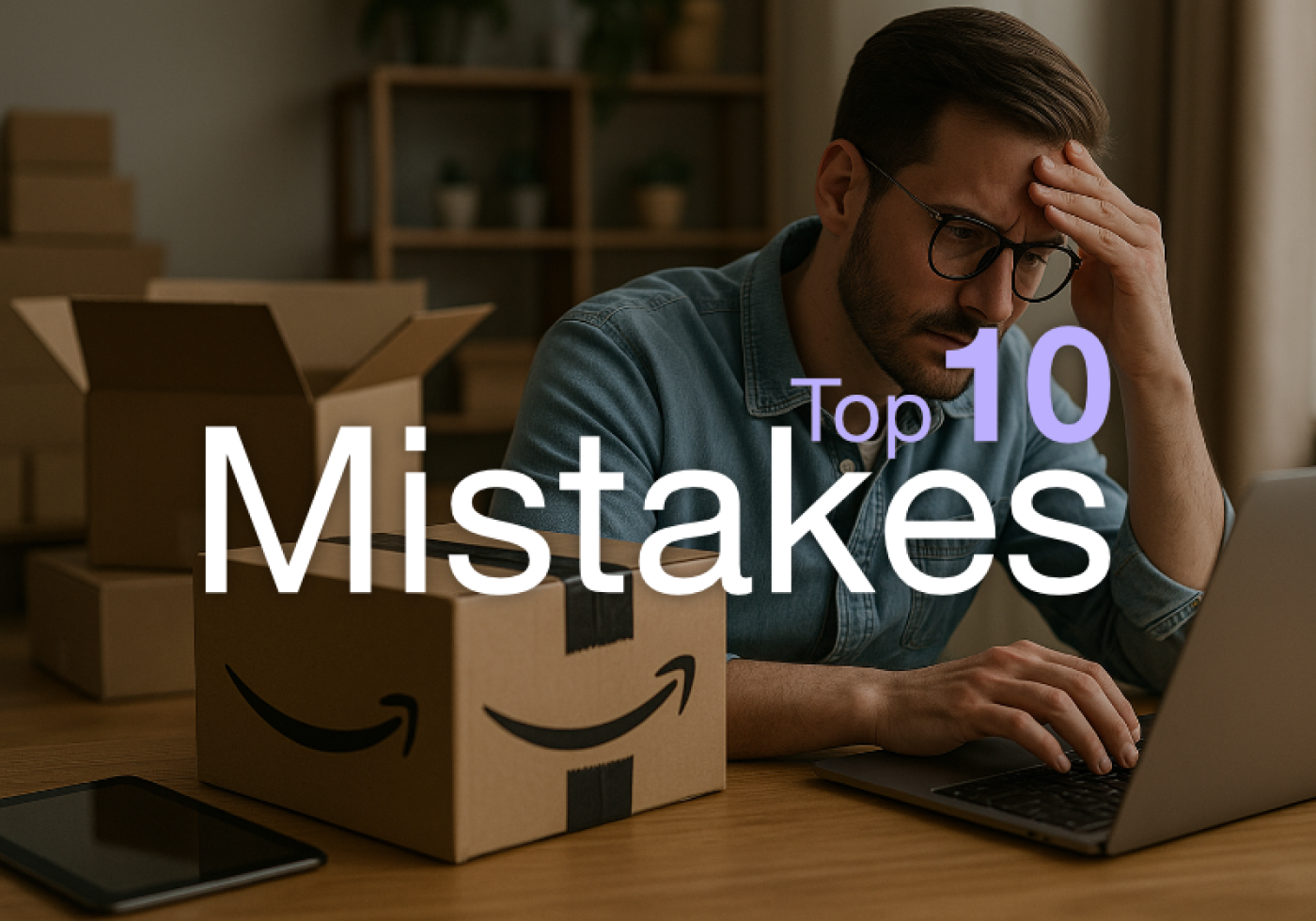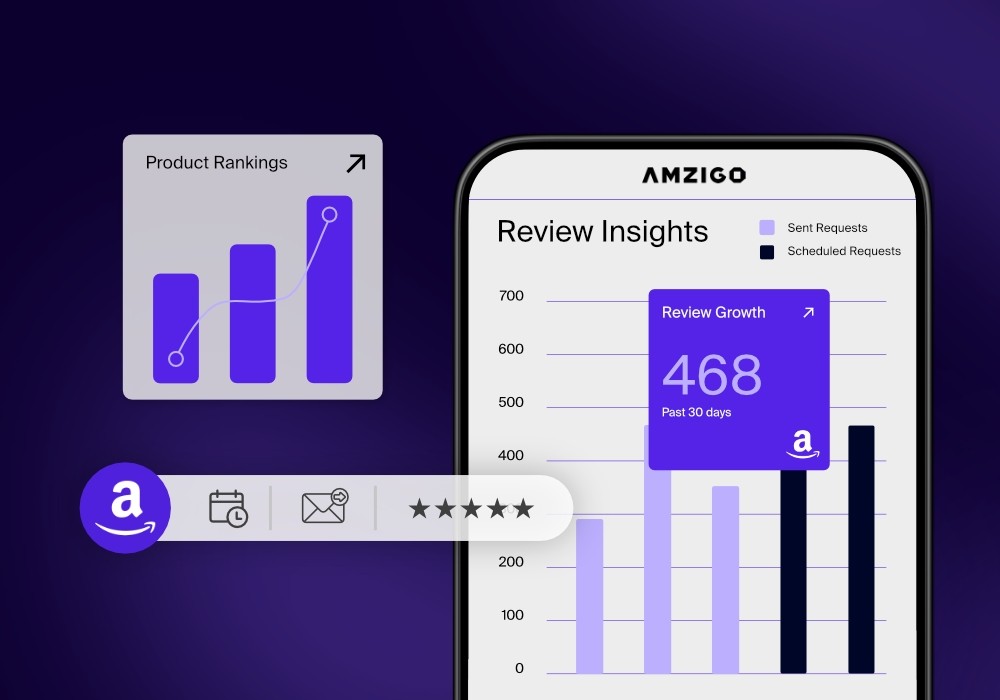Selling on Amazon offers one of the fastest routes to building an online business today. Yet, for every seller who succeeds, there are countless others who struggle or fail because they fall into avoidable traps. Whether you are launching your first product or refining your strategy, understanding these common mistakes can give you a major competitive advantage.
In this guide, we reveal the top 10 mistakes new Amazon sellers make—and exactly how to avoid them for faster growth, better profitability, and long-term success.
1. Choosing the Wrong Product Niche
Finding the right product is the foundation of Amazon success. Too many new sellers rush into oversaturated markets, choose products based on personal preference, or select low-demand niches without analyzing the data.
How to avoid it:
Invest heavily in data-driven product research. Use Amazon seller tools to analyze market demand, competition, and profit margins. Focus on products that solve a real problem, show consistent year-round demand, and offer opportunities for differentiation through bundling, design improvements, or branding.
2. Ignoring Amazon SEO and Keyword Optimization
Without Amazon SEO, even the best product can remain invisible. Many new sellers skip keyword research and upload weak listings that fail to attract buyers.
How to avoid it:
Research relevant keywords before listing. Include high-volume, medium-tail, and long-tail keywords naturally within your product title, bullet points, and description. Amazon’s A9 algorithm rewards relevancy and sales history—optimize your listing early and continually.
3. Poor-Quality Product Listings
Low-quality images, weak bullet points, and vague descriptions will destroy customer trust and sales.
How to avoid it:
Invest in professional, high-resolution product photography. Craft clear, benefit-driven bullet points and a persuasive product description. Use lifestyle images where possible to help customers imagine the product in use.
4. Pricing Too High or Too Low
Many beginners either overprice and scare away buyers or underprice and lose money after fees.
How to avoid it:
Analyze competitor pricing carefully. Use Amazon’s FBA fee calculator to determine your true net margins. Price strategically—competitive enough to win, but profitable enough to sustain your business over the long term.
5. Underestimating Amazon Fees
Amazon's fees can quickly eat into profits if not properly accounted for—referral fees, storage fees, fulfillment costs, and more.
How to avoid it:
Calculate every cost upfront. Use Amazon’s official fee calculators and factor in returns and seasonal storage increases. Build a clear picture of your actual net profit margins before you launch.
6. Running Out of Inventory
Stockouts hurt twice: you lose sales and destroy your product’s ranking, which can take months to rebuild.
How to avoid it:
Track sell-through rates closely. Always reorder inventory before hitting the 30-day stock level. A proactive inventory management system protects your momentum and maintains your visibility.
7. Neglecting Customer Reviews and Feedback
On Amazon, 95% of shoppers read reviews before making a purchase. Lack of reviews destroys trust and conversions.
How to avoid it:
Use Amazon’s “Request a Review” feature after each purchase. Consider using compliant, automated review request tools like Amzigo to build review volume quickly. Deliver outstanding customer service to encourage natural positive reviews.
8. Violating Amazon’s Policies
Policy violations—whether deliberate or accidental—can result in severe penalties, including account suspension.
How to avoid it:
Stay current with Amazon’s seller policies. Prioritize compliance over shortcuts. When in doubt, verify with Amazon Seller Support before taking action to avoid costly mistakes.
9. Skipping Advertising Early On
New sellers often avoid ads to save money, but without advertising, products struggle to gain traction.
How to avoid it:
Invest in Sponsored Products advertising from launch. Start with automatic campaigns to gather keyword data, then refine with manual targeting. Track your ACoS (Advertising Cost of Sales) and optimize weekly for better ROI.
10. Failing to Track and Analyze Performance
If you don’t measure your results, you cannot improve. Many sellers operate blindly without reviewing their data.
How to avoid it:
Analyze your Amazon metrics weekly. Review session counts, conversion rates, ad spend, and customer feedback. Use insights to adjust your listings, pricing, inventory, and advertising strategies.
Conclusion
Avoiding these top mistakes is crucial for building a profitable, sustainable Amazon business. Success on Amazon is not just about hard work—it is about smart, informed execution. By mastering product research, listing optimization, pricing, customer reviews, inventory management, advertising, and analytics, you can create a business that thrives while others struggle.
Every mistake you avoid is a step closer to higher visibility, stronger customer trust, and greater profits. In a competitive Amazon marketplace, working smarter—and not just harder—makes all the difference.
Looking to take your Amazon business to the next level?
Discover how Amzigo's advanced features, like our Automated Review Centre, Product Analysis, and Inventory Management, can transform your selling experience. Check out our features and try it for free!



